Wildlife Sanctuaries in Haryana are ideal for conserving the region’s diverse flora and fauna. The lands of these wildlife sanctuaries in Haryana are habitats for other species that seek refuge or are endangered. Maintaining and fostering wildlife sanctuaries amidst the increasing urbanisation is a must today. These sanctuaries along with protecting the wildlife also offer educational insights. Many recreational opportunities are planned for visitors promising them a moment of fun.
10 Beautiful Wildlife Sanctuaries In Haryana
The preservation of the wildlife and expansion of the sanctuaries has become equally important.
1. Kalesar Wildlife Sanctuary
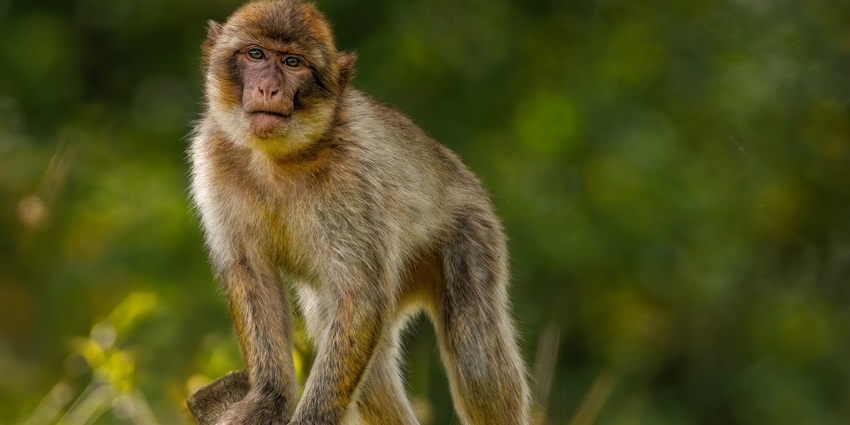
Photo: ambquinn / Pixabay / Image For Representation Only
Kalesar Wildlife Sanctuary is adjacent to Kalesar National Park but both have their uniqueness to show. It is a protected area in Yamunanagar District of Haryana. The sanctuary is home to leopards, wild elephants, monkeys, panthers and red jungle fowl. Kalesar Wildlife Sanctuary lies in the foothills of the Himalayas at Shivalik Range. The sanctuary is covered with precious trees of Sal, Semul, Amaltas and Bahera. To explore around the sanctuary, safari options are also recommended to visitors.
Location: Kalesar Wildlife Sanctuary, Kalesar Village, Yamunanagar District, Haryana
Highlights: Safari, Wild Elephants, Monkeys
Timings: 6 AM – 6 PM
Suggested Read: Places To Visit Near Yamunanagar
2. Bir Shikargarh Wildlife Sanctuary
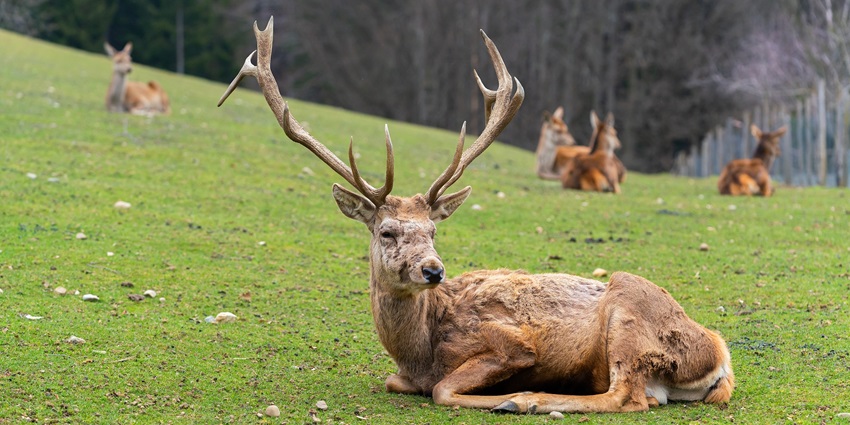
Photo: LN_Photoart / Pixabay / Image For Representation Only
This sanctuary is spread over an area of 767 hectares of land. Bir Shikargarh Wildlife Sanctuary was officially notified as a wildlife sanctuary by the Forest Department of Haryana on 29th May 1987. The area of the sanctuary and its surroundings is considered an Eco-Sensitive Zone. The sanctuary lies at the foothills of the Himalayas in the Shivalik Range. Bir Shikargarh Wildlife Sanctuary is home to deer, Asiatic elephant, Chital Deer, Sambar Deer, Gray Langur, Jungle Cat and Indian Jackal.
Location: Pinjore, Kajiyana, Haryana
Highlights: Eco-sensitive Zone, Sambar Deer, Chital Deer
Timings: 6 AM – 6 PM
3. Chhilchhila Wildlife Sanctuary
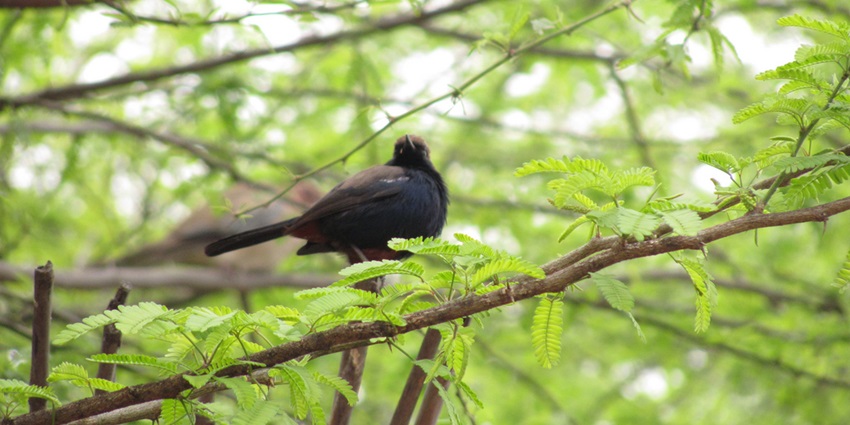
Photo: Priyambada Nath / Wikimedia Commons / Image For Representation Only
Chhilchhila Wildlife Sanctuary is also known as Seonthi Reserve Forest and is located near Kurukshetra University. On the periphery of the sanctuary lies Baba Rodanath Dera Temple. Strategically, Chhilchhila Wildlife Sanctuary is located in a depression which also consists of a small lake. This sanctuary marks numerous migrant species coming and residing during the winter months. It is home to two endangered species, the Oriental Darter and the Painted Stork. According to folklore, the lake of this sanctuary has some connection with the Indian Epic of Mahabharata when Pandavas accessed Haridwar through a tunnel under the lake.
Location: Bhainsi Majra, Haryana
Highlights: Lake, Winter Migrant Species, Endangered Species
Timings: 7 AM – 6 PM
Suggested Read: Places To Visit In Ambala For Couples To Have A Memorable Romantic Retreat
4. Nahar Wildlife Sanctuary

Photo: sarangib / Pixabay / Image For Representation Only
Nahar Wildlife Sanctuary comes under the Nahar Village and is named accordingly and is under the surveillance of the Forest Department of Haryana. This sanctuary is believed to be the last habitat for the endangered species of Blackbucks. Besides them, the other species spotted are wild boar, deer and leopards. The sanctuary is home to multiple avian species and an array of migratory birds which specifically come and reside during the months of winter. Nahar Wildlife Sanctuary is a great place for environment-friendly people and nature and animal lovers.
Location: Kohard -N, Haryana
Highlights: Endangered Species, Blackbucks
Timings: 24*7
5. Abubshahar Wildlife Sanctuary
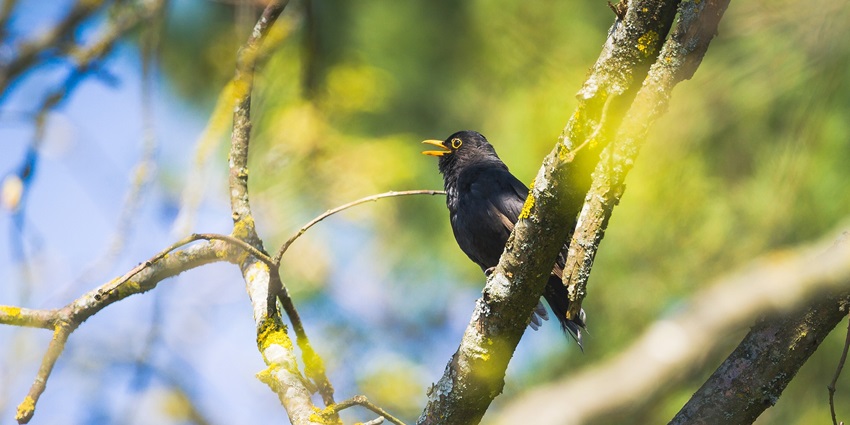
Photo: alandsmann / Pixabay / Image For Representation Only
Abubshahar Wildlife Sanctuary is located in the Sirsa District in Haryana. The government is working on a plan to change Abubshahar Wildlife Sanctuary into a Community Reserve and awaits the participation of the local population in the plan to protect and conserve the flora and fauna. This sanctuary is spread over an area of 29000 acres of land. Abubshahar Wildlife Sanctuary is best visited during the winter months of October to March which makes it ideal for exploration. The place is ideal for relaxation and connects you more with nature.
Location: Abubshahar Wildlife Sanctuary, Sirsa District, Haryana
Highlights: Langur Money, Black Bird, Natural Scenic Spots
Timings: 6 AM – 6 PM
Suggested Read: Places To Visit In Ambala
6. Bhindawas Wildlife Sanctuary
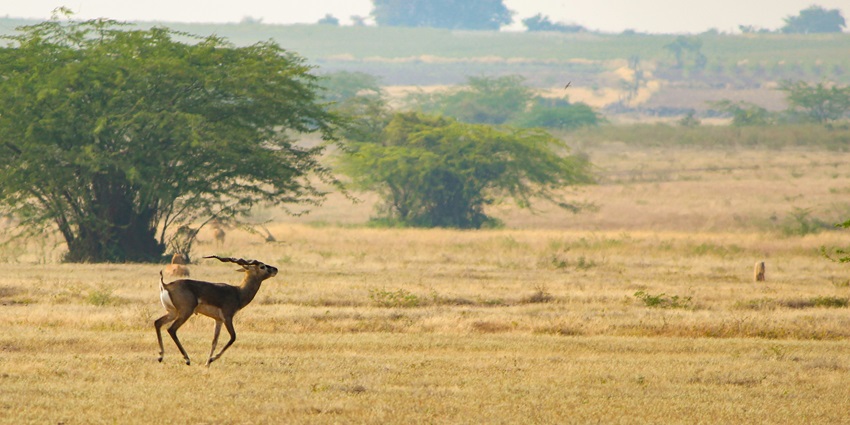
Photo: Kiran Kumar / Unspalsh / Image For Representation Only
This sanctuary is located in the Jhajjar District of Haryana. Bhindawas Wildlife Sanctuary is strategically located and lies in an important part of the ecological corridor at the route of the Sahibi River. Bhindawas Lake lies on the premises of the sanctuary which is the main source of water for the birds and animals residing in their natural habitat. Bhindawas Wildlife Sanctuary is adjacent to Khaparwas Wildlife Sanctuary which is just a kilometre away.
Location: Dhakla – Kasni Rd, Jhajjar District, Haryana
Highlights: Bhindawas Lake, Wetland Habitat, Black Bird
Timings: 6 AM – 6 PM
7. Khaparwas Wildlife Sanctuary
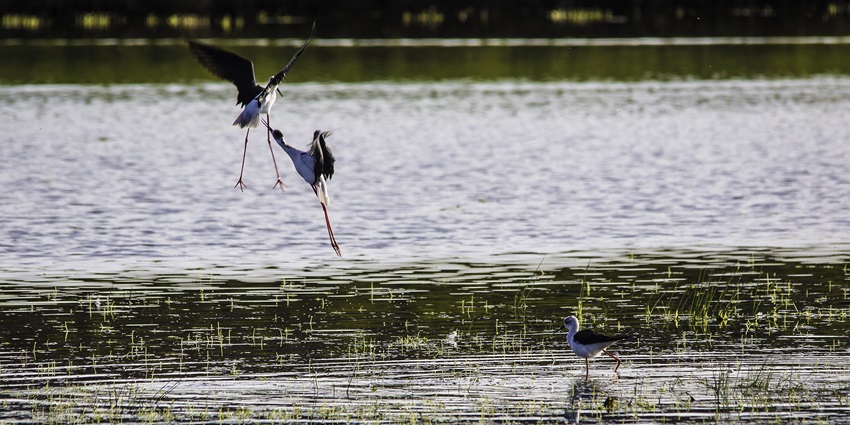
Photo: Lesbains39 / Pixabay / Image For Represnettaion Only
Khaparwas Wildlife Sanctuary is also located in the Jhajjar District of Haryana. This wildlife sanctuary is just a kilometre away from Bhindawas Wildlife Sanctuary so animals might migrate from one sanctuary to another. Khaparwas Wildlife Sanctuary is also an important part of the ecological corridor of the Sahibi River. This sanctuary offers excellent views of nature and is considered a refreshing spot for visitors. The sanctuary is home to multiple migratory birds including waterfowl and waders. Khaparwas Wildlife Sanctuary is visited during the winter months from November to March when the weather is pleasant.
Location: Khaparwas, Haryana
Highlights: Ecological Corridor, Scenic Views, Migratory Birds
Timings: 6 AM to 6 PM
Suggested Read: Things To Do In Rohtak For An Ideal Getaway
8. Khol Hi-Raitan Wildlife Sanctuary
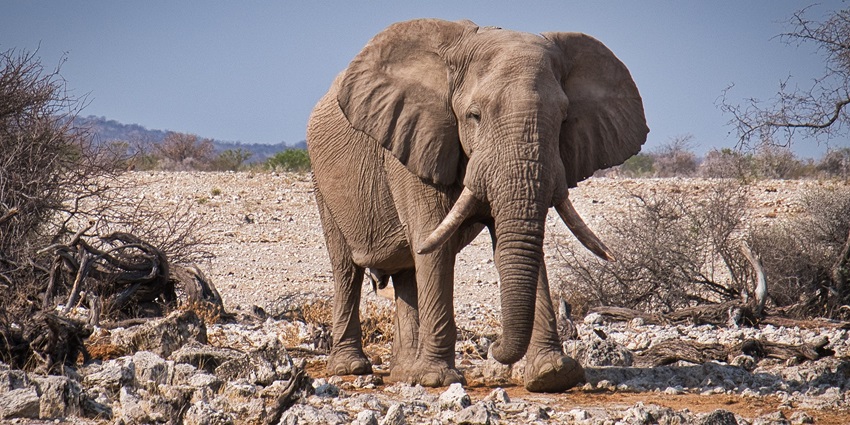
Photo: jbauer-fotographie / Pixabay / Image For Representation Only
Khol Hi-Raitan Wildlife Sanctuary is located in the Panchkula District of Haryana. This wildlife sanctuary is spread over an area of 4388 hectares. In addition to it, an area of 1320 hectares has been assigned as an Eco-Sensitive Zone around it. The sanctuary has close proximity to Bir Shikargarh Wildlife Sanctuary which is just three kilometres away. Khol Hi-Raitan Wildlife Sanctuary lies at the foothills of the Himalayas in the Shivalik Range. The animal species in this sanctuary are similar to those in Bir Shikargarh Wildlife Sanctuary which migrate from one place to another.
Location: Bhoj Mataur, Haryana
Highlights: Eco-Sensitive Zone, Sambar Deer, Chital Deer
Timings: 9:15 AM – 3 PM
9. Kalesar National Park
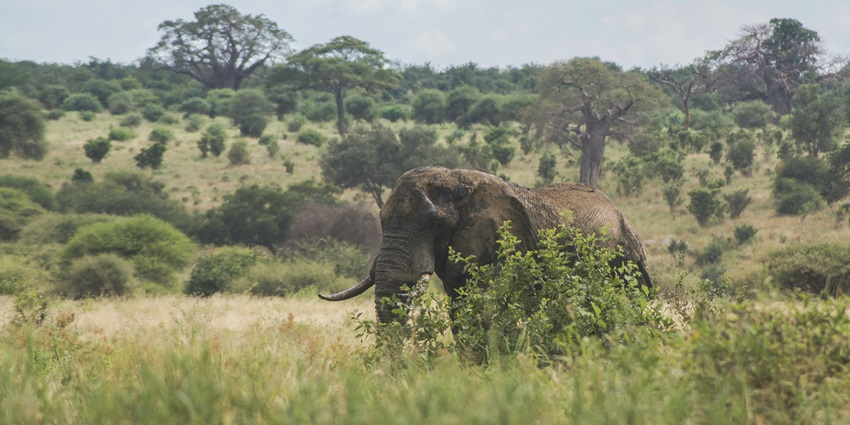
Photo: Martin Olsen / Unsplash / Image For Representation Only
Kalesar National Park is adjacent to Kalesar Wildlife Sanctuary. The place is a popular destination for a variety of animals including leopards, red jungle fowl, porcupines, chital deer, monkeys, langurs and leopards. This site has been an important destination for bird-watching activity. Kalesar National Park is also located at the foothills of the Himalayas in the Shivalik Range. The flora of this place is believed to have medical properties. There lies an ancient temple near the national park dedicated to Lord Shiva.
Location: Kalesar Village, Yamunanagar District, Haryana
Highlights: Safari, Wild Elephants, Monkeys
Timings: 6 AM – 6 PM
Suggested Read: Things To Do In Sonipat
10. Sultanpur National Park
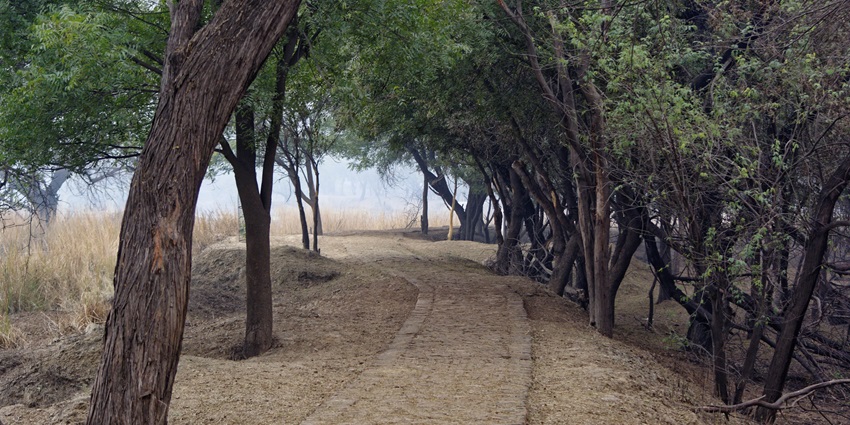
Photo: Slyronit / WIkimedia Commons
Though not a wildlife sanctuary, Sultanpur National Park is equally praised by visitors. This place is renowned and has caught the attention of many. It was previously known as Sultanpur Bird Sanctuary and is located in Sultanpur Village. The sanctuary is ideal for bird lovers and the majority of them come to the location for bird-watching activities. Sultanpur National Park witnesses almost 1800 species of migratory birds. Some of the resident birds include Indian Myna, White-Throated Kingfisher, Painted Stork and White Ibis.
Location: Gurgaon Farukh Nagar Rd, Sultanpur, Gurugram, Haryana
Highlights: Migratory Birds, Paddyfield Pipit
Timings: 6 AM – 6 PM
As urbanisation continues to grow, an utmost need for preserving nature has been raised. Wildlife Sanctuaries in Haryana have been given a top priority to expand the sanctuaries and conserve the diverse animal species. These wildlife sanctuaries have become a home for the endangered species who seek refuge in the habitat. Book a trip with TripXL to these wildlife sanctuaries for an experience that brings you closer to nature. Spread across the state, each sanctuary has its own uniqueness and offers benefits to the wildlife which is preserved.
Cover Photo: clickmanic / Pixabay / Image For Representation Only


 WhatsApp
WhatsApp
 Twitter
Twitter









